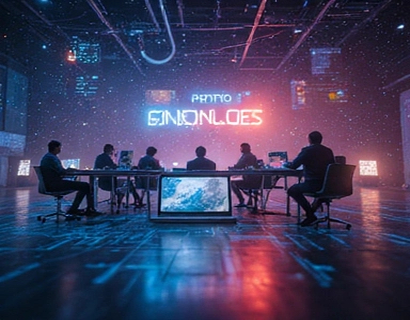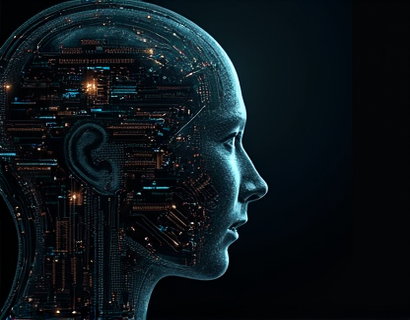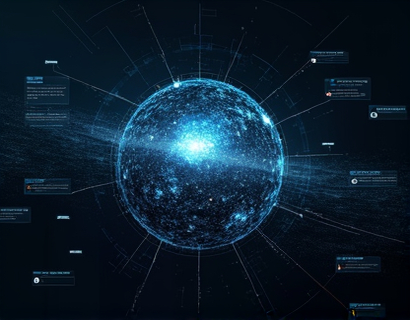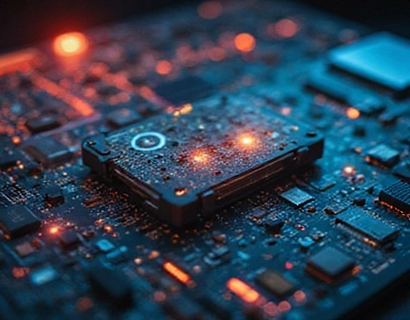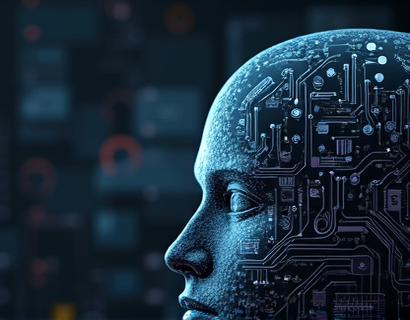Transforming Tournament Experiences with AI-Powered Chat Interfaces
The world of tournaments has evolved significantly over the years, with advancements in technology playing a pivotal role in enhancing the experience for both fans and participants. One of the most exciting developments in this space is the introduction of AI-powered chat interfaces. These platforms are designed to revolutionize the way individuals interact within the tournament ecosystem, offering real-time insights, personalized conversations, and robust community engagement. This article delves into the features and benefits of these AI-powered chat interfaces, exploring how they can elevate the tournament experience for everyone involved.
Real-Time Insights and Updates
One of the most significant advantages of AI-powered chat interfaces is their ability to provide real-time insights and updates. Tournament fans can stay informed about the latest developments, scores, and highlights without the need to constantly check multiple sources. The AI technology integrates with various data feeds, ensuring that the information provided is accurate and up-to-date. This immediacy is crucial for fans who want to follow their favorite tournaments closely and for participants who need to stay informed about changing conditions or rules.
For instance, during a live match, fans can receive instant updates on key moments such as goals, penalties, or significant plays. This not only enhances the viewing experience but also allows fans to engage more deeply with the event, discussing and reacting to the action as it unfolds. For participants, real-time insights can include information about opponent strategies, weather conditions, or even equipment performance, all of which can be critical in making informed decisions during the game.
Personalized Conversations and Interactions
AI-powered chat interfaces go beyond mere information dissemination by offering personalized conversations and interactions. These platforms use advanced natural language processing (NLP) to understand and respond to user queries in a human-like manner. Whether a fan wants to know more about a specific player, ask for historical data, or seek recommendations for similar tournaments, the AI can provide tailored responses based on the user's preferences and past interactions.
For participants, personalized interactions can be even more valuable. Coaches and players can engage in strategic discussions, receive customized tips, and even get feedback on their performance. The AI can analyze past matches and provide insights that can help improve future performances. This level of personalization fosters a more engaging and supportive community, where users feel valued and heard.
Robust Community Engagement
Building a strong community around tournaments is essential for creating a vibrant and loyal fan base. AI-powered chat interfaces excel in fostering community engagement by facilitating connections between fans, players, and other enthusiasts. These platforms often include features such as forums, chat rooms, and social media integrations, allowing users to share their thoughts, experiences, and passion for tournaments.
Moderated by AI algorithms, these communities remain safe and welcoming, ensuring that all interactions are positive and constructive. Users can join groups based on specific interests, such as a particular sport, league, or even a specific team. This segmentation helps in creating niche communities where users can connect with like-minded individuals, share tips, and organize meetups or viewing parties.
Enhanced Fan Engagement and Loyalty
The combination of real-time insights, personalized interactions, and robust community engagement significantly enhances fan engagement and loyalty. Fans who feel connected to the tournament and its community are more likely to remain loyal and continue supporting the event over time. This loyalty translates into higher attendance rates, increased merchandise sales, and a stronger online presence through social media shares and discussions.
For organizers, this means a more engaged and enthusiastic audience, which can lead to better sponsorship opportunities and higher revenue. The data collected through these AI-powered chat interfaces can also provide valuable insights into fan behavior and preferences, helping organizers make data-driven decisions to further enhance the tournament experience.
Seamless Integration and User-Friendly Design
To ensure widespread adoption, AI-powered chat interfaces must be seamlessly integrated into existing tournament platforms and user-friendly in design. This means that fans and participants can access the chat interface through various channels, including the tournament website, mobile apps, and social media platforms. A intuitive and clean interface ensures that users can navigate the features easily, without feeling overwhelmed by complex technology.
Compatibility with different devices, including smartphones, tablets, and desktops, is crucial. This ensures that users can engage with the chat interface anytime and anywhere, whether they are at the venue, commuting, or at home. The design should also be accessible, catering to users with disabilities to ensure inclusivity.
Security and Privacy Considerations
With the increased use of digital platforms, security and privacy have become paramount concerns for users. AI-powered chat interfaces must implement robust security measures to protect user data and ensure privacy. This includes encryption for data transmission, secure authentication methods, and compliance with data protection regulations such as GDPR.
Transparency in data usage and clear privacy policies can help build trust with users. Users should be informed about what data is collected, how it is used, and how they can control their privacy settings. By prioritizing security and privacy, these platforms can attract and retain users who value their personal information.
Scalability and Flexibility
As tournaments of various sizes and complexities adopt AI-powered chat interfaces, scalability and flexibility become critical factors. The platform should be able to handle a large number of users and high volumes of data without compromising performance. This ensures that the chat interface remains responsive and reliable, even during peak usage times such as during live events.
Flexibility in customization is also important, allowing tournament organizers to tailor the chat interface to their specific needs. This can include branding options, custom chat bots, and integration with existing ticketing and management systems. A flexible platform can adapt to different tournament formats, from small local events to large international competitions.
Educational Resources and Support
To help users fully leverage the capabilities of AI-powered chat interfaces, providing educational resources and support is essential. This can include tutorials, FAQs, and user guides that explain the features and benefits of the platform. For new users, onboarding processes with step-by-step instructions can make the transition smoother and more intuitive.
Ongoing support through help desks, live chat, and community forums ensures that users can get assistance when needed. This support can cover a range of topics, from technical issues to strategic advice, enhancing the overall user experience. By investing in user education and support, these platforms can foster a more knowledgeable and engaged user base.
Case Studies and Success Stories
To illustrate the impact of AI-powered chat interfaces in tournament settings, consider a few success stories. One notable example is a major sports league that implemented an AI chat bot to enhance fan engagement during matches. The bot provided real-time statistics, player insights, and interactive polls, leading to a significant increase in fan participation and engagement. Fans reported feeling more connected to the game and to other supporters, resulting in a more enjoyable and immersive experience.
Another example is a popular esports tournament where an AI-powered chat interface was used to facilitate communication between teams, coaches, and analysts. The chat bot analyzed game data in real-time, offering strategic recommendations and historical comparisons. This not only improved team performance but also added an exciting layer of analysis for fans, who could follow the strategic discussions in real-time.
These case studies demonstrate the potential of AI-powered chat interfaces to transform tournament experiences, making them more engaging, informative, and community-driven.
Future Trends and Innovations
As technology continues to advance, the future of AI-powered chat interfaces in tournaments looks promising. One trend is the integration of augmented reality (AR) and virtual reality (VR) to create immersive experiences. Imagine fans using VR headsets to feel as if they are part of the action, with the AI chat interface providing real-time commentary and insights directly within the virtual environment.
Another area of innovation is the use of machine learning to improve the accuracy and relevance of the information provided. As the AI system processes more data, it becomes better at predicting user interests and providing personalized content. This could include anticipatory suggestions for upcoming matches, personalized news feeds, and even virtual meet-and-greets with players.
Additionally, the incorporation of sentiment analysis can help organizers gauge the mood of the audience in real-time, allowing for more responsive and engaging interactions. By understanding fan emotions and reactions, organizers can tailor their communications and events to better meet the audience's needs and preferences.
Conclusion
AI-powered chat interfaces are poised to revolutionize the tournament experience for both fans and participants. By providing real-time insights, personalized interactions, and robust community engagement, these platforms offer a comprehensive solution to enhance the overall experience. As technology continues to evolve, the potential for innovation in this space is vast, promising even more exciting developments in the future. Embracing these advancements can help tournaments stay relevant, engaging, and beloved by a global audience.



